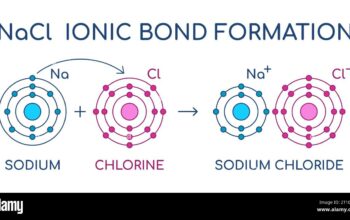Absolute zero, denoted as 0 Kelvin or -273.15 degrees Celsius, is the theoretical temperature at which all classical motion of particles ceases. It embodies a point of ignorance concerning thermodynamics and quantum mechanics, provoking both scientific curiosity and philosophical discourse. A tantalizing question emerges: why can’t we venture below this enigmatic threshold? This exploration delves into the fundamental principles governing thermodynamics, quantum mechanics, and the implications surrounding the concept of temperature in our universe.
To commence this inquiry, one must first grasp the nature of temperature itself. Temperature is fundamentally an empirical measure of the average kinetic energy of the particles that constitute matter. At higher thermal energies, particles oscillate vigorously, while at lower energies, their motion decelerates until, theoretically, absolute zero is reached, where their motion would entirely subside. However, this tantalizing concept teeters on the brink of paradox as we delve deeper into the realms of physics.
It is essential to discern that absolute zero represents not merely a numerical benchmark but a conceptual fulcrum in thermodynamics. According to the third law of thermodynamics, it becomes increasingly improbable to achieve absolute zero through any finite process. This postulate emphasizes the inaccessibility of this temperature limit; any attempt to extract energy from a system faces diminishing returns as it approaches absolute zero. The entropy of a perfect crystalline substance approaches zero at this temperature, yet achieving a perfect crystal is theoretically implausible due to pervasive atomic disorder. Thus, the quest for absolute zero is riddled with limits that impose a natural barrier around it.
Furthermore, one must consider the implications of quantum mechanics in this conundrum. At temperatures near absolute zero, the wave-like nature of particles becomes pronounced, culminating in phenomena like Bose-Einstein condensation. This state occurs when a group of bosons, particles that follow Bose-Einstein statistics, occupy the same quantum state, behaving as a single quantum entity. The ensemble’s collective behavior at these frigid temperatures challenges classical intuitions about motion and energy distribution. If one were to theoretically lower the temperature even further, we encounter a peculiar dilemma: the particles would occupy even lower energy states, yet by the principles of quantum mechanics, the Heisenberg Uncertainty Principle dictates that there exists a fundamental limit to the precision of simultaneously measuring a particle’s position and momentum. This uncertainty manifests as residual motion, preventing any particles from being perfectly stationary, thus barring the possibility of reaching below absolute zero.
An exploration into the kinetic notions of systems brings forth intriguing challenges. Temperature is often construed as a scalar quantity; however, the notion of negative temperature emerges in certain contexts, particularly within systems exhibiting inverted populations of energy levels. In these systems, higher energy states are more populated than lower ones, leading to a scenario where adding energy results in a reduction of entropy. Consequently, one could argue that such systems exhibit negative temperatures, prompting confusion regarding the absolute temperature scale. Despite the apparent paradox, these negative temperature states do not signify temperatures beneath absolute zero in the traditional sense; rather, they reflect the complex interplay between energy states and selection rules within a wholly unique thermodynamic regime.
Moreover, the implications of quantum entanglement further complicate our understanding of temperature and heat exchanges. Entangled particles exhibit correlated properties, allowing instantaneous interaction regardless of distance, a phenomenon that seemingly defies classical notions of thermal radiation. If energy, as a concept, could traverse the boundary of absolute zero through entanglement, we would challenge the very foundations of thermodynamic laws. Yet, the conservation of energy remains inviolable, reinforcing the belief that surpassing absolute zero cannot materialize within our current understanding of physics.
To conclude, the prohibition against transgressing absolute zero springs from a confluence of thermodynamic laws, quantum mechanics, and philosophical inquiries into the nature of symmetry in physical laws. Rather than merely an energetic impasse, absolute zero encapsulates a profound paradigm that governs the behavior of matter, energy, and the cosmos. It beckons ambitious inquiries into the laws of fundamental physics while consistently reasserting its role as an unyielding boundary within the thermal landscape of our universe. As we continue to investigate the thermodynamic limits and quantum peculiarities associated with extreme conditions, the question remains emblematic of humanity’s insatiable quest for understanding in the face of ultimate imperatives.
In this intricate tapestry of scientific exploration, absolute zero stands not just as a thermodynamic curiosity but as a testament to the complexities that underpin our comprehension of the universe. As physicists tread cautiously up to the threshold of this limit, it encourages us to reflect on the essence of existence—and the principles that, perhaps irrevocably, govern our universe.












